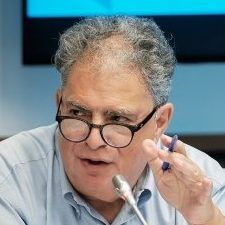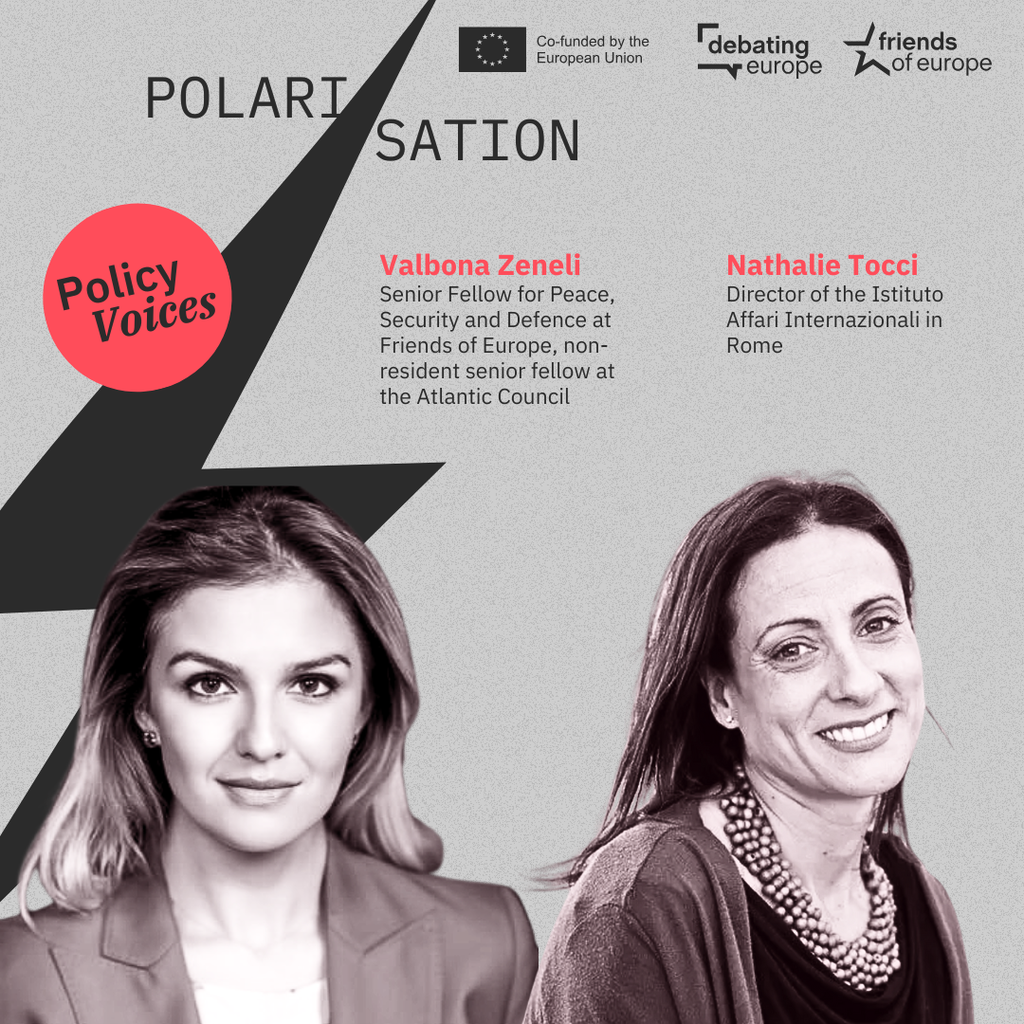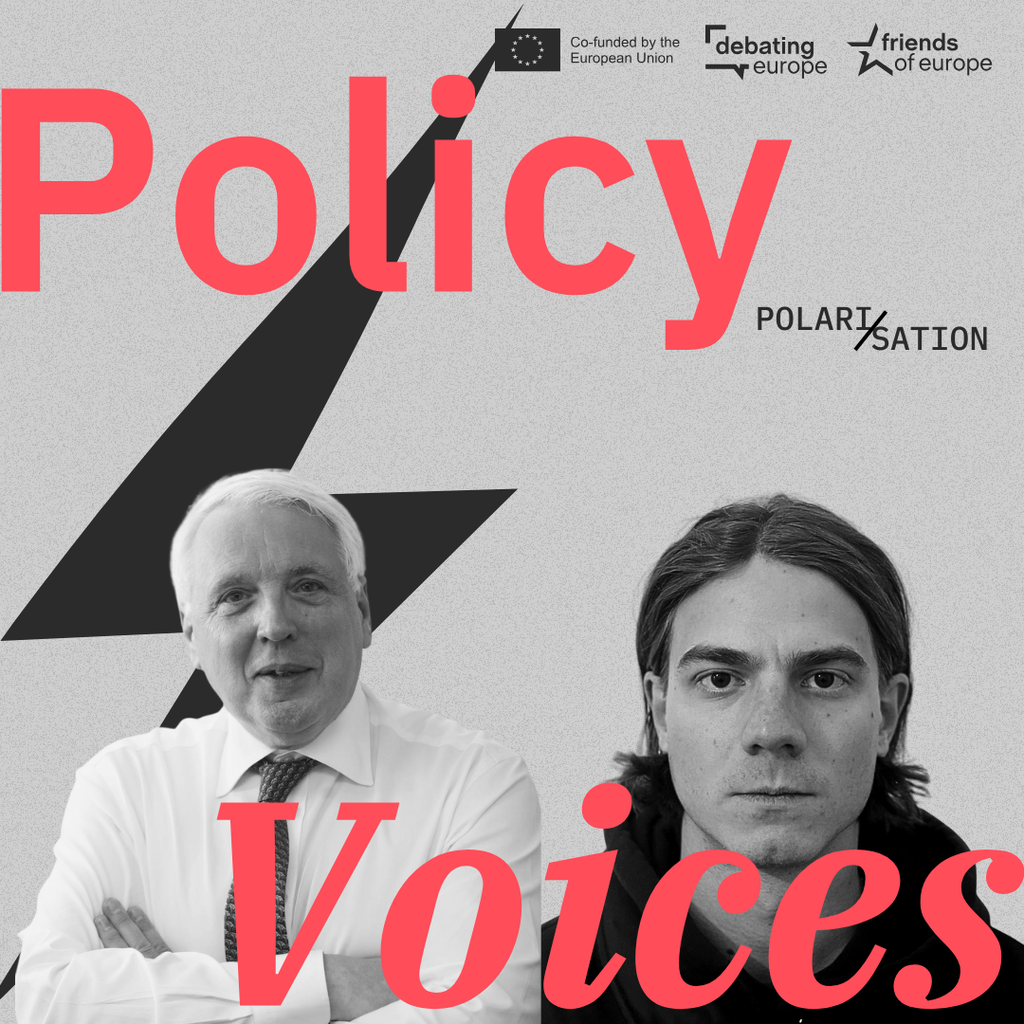From ambition to action: building Europe’s Defence Union
Past event In person

- Area of Expertise
- Peace, Security & Defence
Peace, Security & Defence

Senior Fellow for Peace, Security and Defence at Friends of Europe
European Union leaders were quick to congratulate themselves on having overcome Hungarian obstruction of a €50bn four-year financial aid package for Ukraine at a European Council meeting on 1 February. But they are still acting culpably slowly in providing urgently needed arms and munitions for Kyiv’s fight against Russian aggression.
Despite dramatic warnings from Berlin, Stockholm and NATO’s top soldiers about the risk of a Russian attack on NATO in the coming years, many governments are talking bigger than they are acting. While they pay lip service to the need to build a ‘war economy’, Western Europe’s main powers are not yet walking the talk when it comes to investment, orders or resupplying Ukraine. We have the economic power, but we don’t exercise the political will.
EU defence ministers admitted last week that they would only deliver just over half of the one million rounds of ammunition that they had promised by April. They swiftly moved the goalposts and declared victory because they have now, supposedly, ramped up their defence industries sufficiently to produce one million rounds of ammunition a year. That’s not the same thing.
Most of the shells provided to Ukraine so far under the EU initiative have come from European armies’ dwindling stocks. The supply chain is still not running fast enough to meet the needs of frontline forces facing a daily barrage of superior firepower from Russia’s massed artillery. The Ukrainian army is having to ration ammunition. While European leaders dither and US assistance is paralysed by partisan battles in Congress, Moscow has converted swathes of its own industry to a war footing, retooling car plants to make or refurbish tanks, and churning out artillery and missiles despite technological bottlenecks due to Western sanctions. Russia has also secured munitions from North Korea, as well as drones and possibly missiles from Iran.
Russia’s war on Ukraine has changed the paradigm, but not every government or manufacturer has got the message
To be fair, senior EU officials and some governments, especially in Central Europe, have been working flat out to get more essential kit to Ukraine.
Internal Market Commissioner Thierry Breton, who has toured ammunition makers around the continent, told a Friends of Europe event on 1 February that with extra money from the recently adopted Act in Support of Ammunition Production (ASAP), the EU would lift annual production to 1.4 or 1.5 million rounds by the end of this year and two million in 2025. Breton bluntly urged the European Investment Bank (EIB), the EU’s soft-loan lender, to change its rules to permit it to fund defence and energy projects, and not just dual-use technology and critical infrastructure.
“The EIB is here to support EU policies – all the policies. Energy is part of EU policy. Defence is now part of the policy. So, I expect the EIB to adapt its rules to make sure that the EIB will follow our strategic vision,” Breton said. “What is more important today than our defence? Isn’t it strategic? It’s absolutely mandatory.”
EIB support would send an important signal to European institutional investors such as pension funds that refrain from investing in defence companies either for regulatory reasons, on ethical and environmental grounds or for fear of damage to their reputation. But changing rules that exclude investment in “ammunition and weapons … as well as equipment or infrastructure dedicated to police, military use” requires a unanimous decision by the EU’s 27 finance ministers, which has not been possible so far.
Increased defence industrial capacity in Europe will be vital for a long war of attrition but it doesn’t do enough to meet Ukraine’s immediate needs. Nor does it guarantee immediate contracts.
Defence industry executives keep telling EU governments that they need long-term signed orders to substantially expand factories, hire and train workers, and source explosives and components. But national arms procurement processes remain long and bureaucratic, and Breton is struggling to persuade manufacturers to give orders destined for Ukraine priority over other clients.
For three decades, Europe’s defence industries have been used to supplying mostly a single national government customer, at a single price and at their own speed. Russia’s war on Ukraine has changed the paradigm, but not every government or manufacturer has got the message.
Some allies continue to withhold potentially game-changing weapons. Chancellor Olaf Scholz has been browbeating European allies to follow Germany’s lead in massive financial and military assistance to Kyiv – second only to the United States according to the Kiel Institute for the World Economy’s Ukraine support tracker. Yet his coalition, last month, defeated a parliamentary motion urging Berlin to provide Taurus long-range cruise missiles for which President Volodymyr Zelensky has been pleading for months. These stand-off weapons could help cut Russian supply lines to occupied Crimea.
Scholz is reportedly concerned that German weapons could be used to hit targets inside Russia, drawing Berlin into the war. Yet Kyiv has given Western partners assurances on how and where it will use the equipment they supply. The same argument was used to delay the delivery of Leopard 2 tanks last year, only to be dropped once other allies moved forward.
Moreover, Germany’s austerity budget for 2024 means it will once again fail to reach its NATO commitment of spending two per cent of GDP on defence, despite creating a special €100bn fund in 2022 to finance a catch-up in equipment for its enfeebled armed forces. Berlin is also holding up an increase in the European Peace Facility, which reimburses member states partially for weapons given to Ukraine, arguing that it should contribute less because of its substantial bilateral assistance to Kyiv.
Across the Rhine, France languishes in 15th place in the Kiel Institute’s table of bilateral arms donors to Ukraine, well behind much smaller countries such as Lithuania, Denmark, Norway or the Netherlands, in contrast with President Emmanuel Macron’s rhetoric in support of Kyiv. French officials insist those figures do not reflect the strategic value of the weapons supplied, noting that French Caesar long-range self-propelled howitzers and Scalp missiles had proved highly effective. Macron announced last month that Paris would substantially increase the supply of both systems in the coming months. He also said French arms makers have doubled the speed at which they are producing these weapons in response to government pressure. But manufacturing a Caesar howitzer still takes 15 months.
In general, southern Europe has been slower to press the accelerator in defence spending and production than northern and eastern nations, probably because Russia still looks like a more distant threat seen from Madrid, Lisbon or Rome than from Warsaw or Vilnius, while France does not feel as threatened because it has its own nuclear arsenal, unlike other continental allies.
The big [EU] countries need to overcome their enduring reluctance to let the EU take a bigger role in defence
The bigger problem is that political leaders across Western Europe remain reluctant to tell their voters the uncomfortable truth about the potential threats to their own freedom, security and living standards from Russian aggression and widening conflict in the Middle East. They are too busy hosing down social unrest triggered in part by rising food and energy prices due to the war in Ukraine, the Russian gas cutoff and supply chain disruption in the Red Sea.
While Macron has repeatedly said that “the return of war to Europe” and the imperative to prevent Russia from prevailing in Ukraine forces the EU to change its priorities, he is spending extra cash on appeasing farmers who barricaded French roads rather than on a defence surge.
Only in the Baltic states, Poland, and to some extent the Czech Republic and Romania, is there a widespread sense of living in an emergency situation with war on the doorstep. And even there, protests by farmers and truck drivers who say they are being undercut by imports of cheap grain and poultry from Ukraine, are forcing governments to put domestic interests ahead of the need to keep Kyiv’s war-hit economy afloat with tariff- and quota-free exports to the EU.
In Brussels, the heightened sense of urgency in support of Ukraine has not ended old turf wars about who is in charge of defence. On the contrary, many member states including crucially Germany are fighting a rearguard action against attempts by the Commission to take a greater role in coordination, funding and arms procurement.
Only seven smaller EU states have so far used the European Defence Agency’s (EDA) framework contract to procure ammunition jointly, placing orders worth a modest €250bn. The EDA has only about a dozen staff working full-time on the initiative. The big countries, Germany, France and even Sweden, have kept control firmly in the hands of their national armaments directors and invited other EU partners to join their bulk orders.
Does this matter? For sure, whichever route delivers ammunition fastest to Ukraine – whether bilateral, multilateral under lead nations, through NATO’s Support and Procurement Agency or the EDA – should be used. But it’s not quite a case of ‘the more, the merrier’.
To avoid duplication, waste and continued fragmentation of the industry, the big countries need to overcome their enduring reluctance to let the EU take a bigger role in defence. Brussels can help member states and NATO by aggregating demand, offering financial incentives, and organising joint procurement of strategic enablers such as airlift, intelligence, surveillance and reconnaissance capabilities, air and missile defence systems, and logistics capacities that individual countries cannot afford or need to use in common with allies and neighbours.
Breton will bring forward an EU defence industrial strategy this month and has said he aims for a €100bn defence fund, half to sustain long-term support for Ukraine by investing in European defence industries, and the other half to finance common European infrastructure for defence in space, cyber, air and missile defence, and the maritime domain. European Council President Charles Michel says the Union should consider issuing defence bonds to help fund common defence projects.
Given the ingrained national resistance, the next Commission will have to invest a lot of political capital, persuasion and resources to achieve that objective. Appointing a full-time commissioner for defence and space, with a reporting line to the EU’s foreign policy High Representative and a working relationship with NATO, would help. That would also require hiring more staff with experience in defence procurement.
Perhaps a shock such as a victory for “America first” Republican Donald Trump in the US presidential election could jolt EU leaders into backing such an initiative. But if Trump’s previous term in the White House is any guide, European allies are more likely to try to cut bilateral deals with Washington than to band together behind a bold common European defence investment plan.
The views expressed in this #CriticalThinking article reflect those of the author(s) and not of Friends of Europe.
Past event In person

Next event In person & Livestreamed

Past event Online

Past event Online





Stay informed
We use cookies and similar technologies to adjust your preferences, analyze traffic and measure the effectiveness of our campaigns. Learn more about our privacy policy.